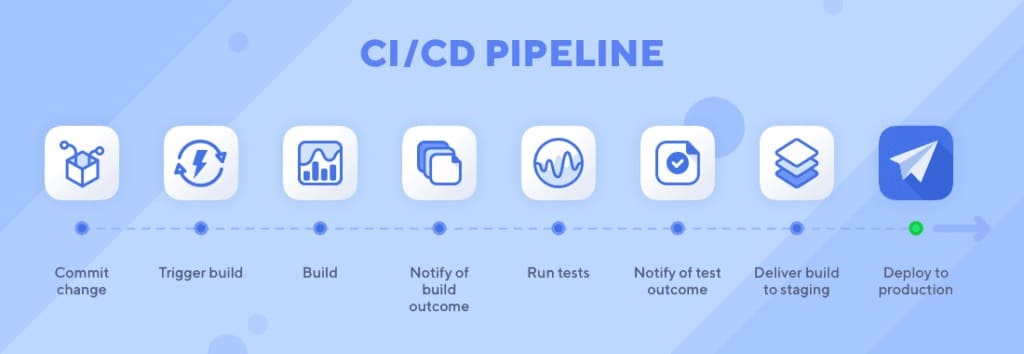Project Overview
Continuous Integration and Continuous Deployment (CI/CD) is a software development practice that involves continuous integration of code changes and automated deployment of the software to production. Amazon Web Services (AWS) is a cloud computing platform that provides a wide range of services including computing, storage, and database services, among others. In this case study, we will discuss the implementation of CI/CD in AWS to improve the software development process.

Problem Statement
Our client, a leading e-commerce platform, was facing challenges in delivering software updates quickly and efficiently. The existing software development process was manual and time-consuming, resulting in delayed releases and customer dissatisfaction. The client wanted to implement a modern software development process that would enable them to deliver updates quickly and efficiently.
Solution
After analysing the client’s requirements and existing infrastructure, we proposed the CI/CD pipeline implementation in AWS. We chose AWS because of its highly scalable and flexible infrastructure, which would enable us to handle the increasing traffic and data volume.
The following steps were taken to implement CI/CD in AWS:
- Step 1: Setting up the Development Environment We set up the development environment on AWS by launching an Amazon Elastic Compute Cloud (EC2) instance and installing the necessary software tools, such as Git, Jenkins, and Docker.
- Step 2: Configuring the CI/CD Pipeline We configured the CI/CD pipeline using Jenkins and Git. Jenkins was used for continuous integration, while Git was used for version control. The pipeline was configured to automatically build and test the code changes, and then deploy them to the production environment.
- Step 3: Setting up the Deployment Environment We set up the deployment environment on AWS by launching an Amazon Elastic Beanstalk instance and configuring the necessary settings. Elastic Beanstalk is a fully managed service that enables developers to quickly deploy and manage applications in the AWS Cloud.
- Step 4: Implementing Automated Testing We implemented automated testing using Selenium and JMeter. Selenium was used for automated functional testing, while JMeter was used for load testing. The tests were integrated into the CI/CD pipeline, ensuring that code changes were thoroughly tested before being deployed to the production environment.
- Step 5: Implementing Docker Containers We implemented Docker containers to enable the application to run consistently across different environments. The Docker images were stored in Amazon Elastic Container Registry (ECR), which enabled us to easily manage and deploy the containers.
Results
The implementation of CI/CD in AWS provided the following benefits to the client:
- Faster Release Cycles: The CI/CD pipeline enabled the client to release software updates quickly and efficiently, reducing time to market.
- Reduced Risk: Automated testing and deployment reduced the risk of human error, ensuring that code changes were thoroughly tested before being deployed to the production environment.
- Scalability:The AWS infrastructure allowed for the easy scaling of the development and deployment environments, enabling the client to handle increasing traffic and data volume.
- Consistency: The use of Docker containers ensured that the application ran consistently across different environments, reducing the risk of compatibility issues.
Conclusion
The implementation of CI/CD in AWS enabled our client to implement a modern software development process that enabled them to deliver updates quickly and efficiently. The use of automated testing and deployment reduced the risk of human error and ensured that code changes were thoroughly tested before being deployed to the production environment. The AWS infrastructure provided scalability, ensuring that the client could handle increasing traffic and data volume. The use of Docker containers ensured consistency, reducing the risk of compatibility issues.
Technology
-
Cloud
AWS
-
Automate Server
Jenkins
-
Automate Software
AWS CodePipeline
-
Web Services
AWS Lambda
-
Web Services
CloudFormation
-
Repository
GitLab CI/CD
-
Web Services
Elastic Beanstalk